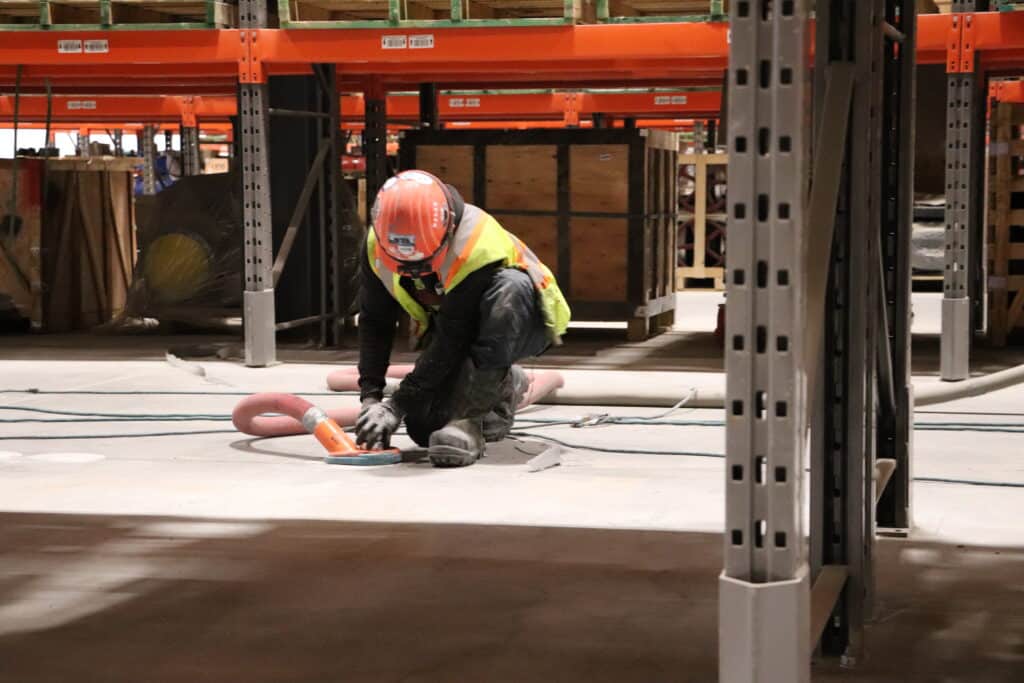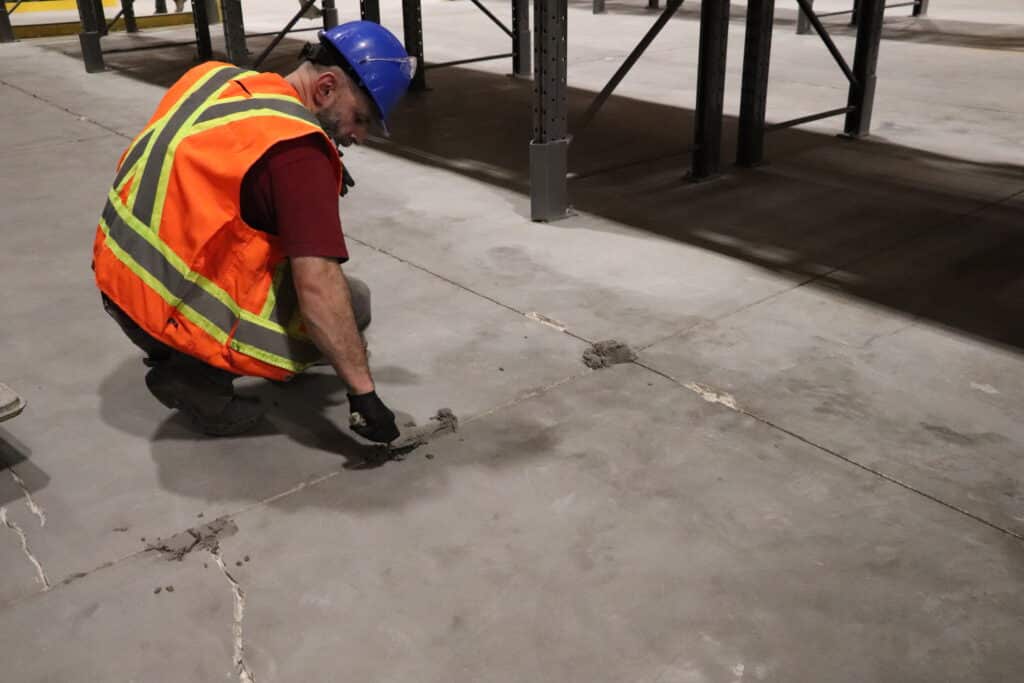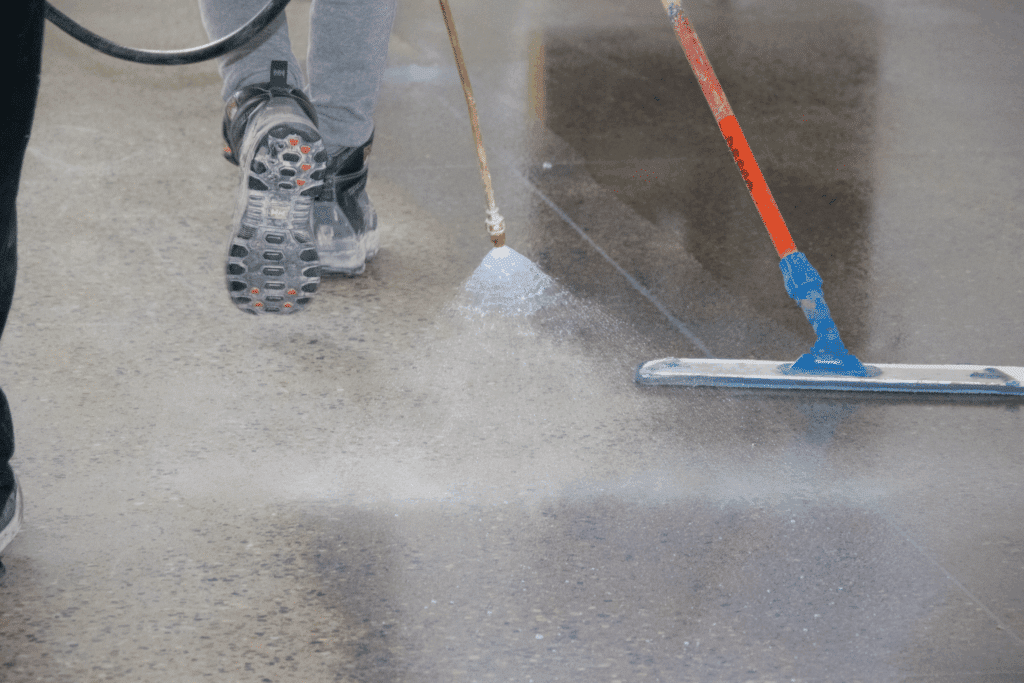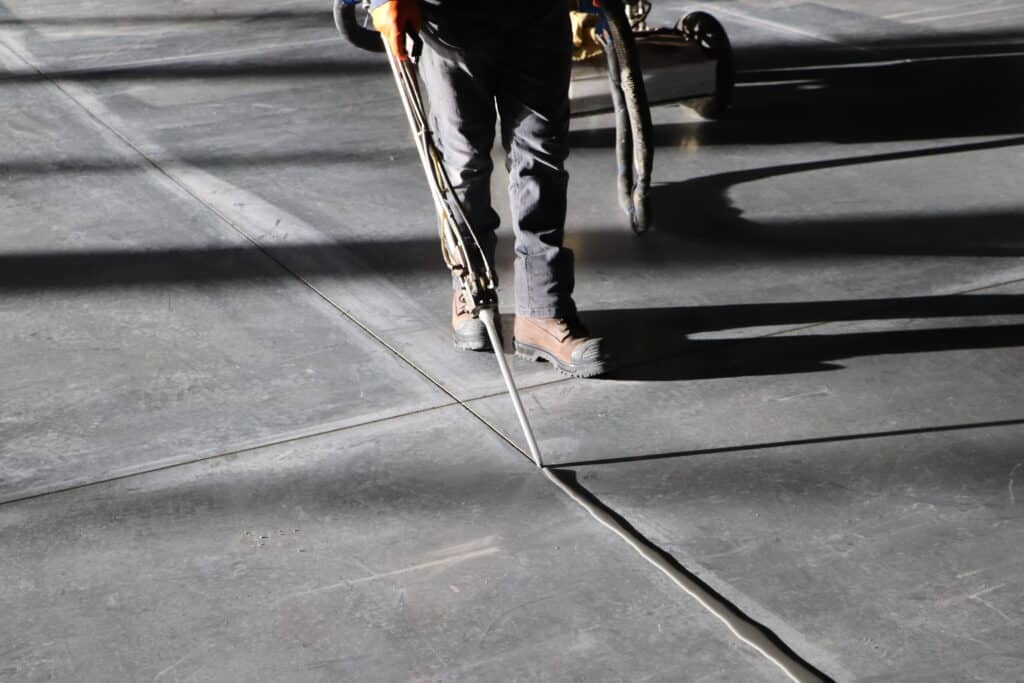ESSENTIAL MAINTENANCE FOR WAREHOUSE FLOORS
Warehouse floors are the backbone of any facility, supporting daily operations and carrying the weight of heavy machinery, forklifts, and constant traffic. However, even small imperfections can create major challenges over time, from increased equipment repair costs to safety concerns. This makes warehouse floor repair an essential step in preserving efficiency. At the same time, proactive maintenance keeps surfaces performing at their best, preventing minor issues from turning into costly problems.
Key Warehouse Floor Challenges and Solutions

Premature Forklift Maintenance: Reducing Equipment Wear with Floor Repairs
Uneven concrete, floor joints, and worn surfaces can cause premature wear and tear on forklifts and other material-handling equipment. Every jolt from rough flooring affects the wheels, suspensions, and engines, leading to frequent, costly repairs.
Solution: Lippage Grinding
- Lippage grinding smooths down uneven floor areas and high edges of joints, creating a more uniform surface. This eliminates abrupt impacts that wear down equipment, extending the lifespan of forklift wheels and suspensions.
Solution: Control Joint Filling
- Filling control joints with a semi-rigid polyurea provides support to joint edges and reduces impacts from heavy machinery. By limiting wear on joint shoulders, control joint filling minimizes the potential for forklift maintenance and increases floor durability.

Load Stability and Safety: Preventing Accidents from Floor Irregularities
Cracks, dips, and gaps in concrete floors can lead to instability, causing heavy loads to tip or fall. This not only risks employee safety but can also result in product damage, affecting overall productivity.
Solution: Control Joint Rebuilding
- Reinforcing control joints helps prevent cracks from expanding and maintains load stability. Rebuilding and supporting joints with durable materials ensure smooth transitions for forklifts, keeping loads secure and minimizing risks.
Solution: Immediate Crack Repairs
- Addressing small cracks early prevents them from growing into larger issues that could destabilize loads. Concrete crack repair also prevents debris buildup and supports load stability for better warehouse safety.

Contamination and Hygiene: Controlling Dust and Debris Accumulation
Dust and debris from untreated concrete floors can compromise hygiene in sensitive warehouse areas, particularly in facilities dealing with food storage, pharmaceuticals, or electronics. Dusting can also affect machinery, leading to more frequent cleaning and maintenance needs.
Solution: Densifying Agents
- Applying densifying agents reduces dusting by binding concrete particles and hardening the floor surface. This provides a cleaner, dust-free environment, making floors easier to maintain and creating a safer workplace.
Solution: Floor Coatings
- Epoxy or urethane coatings create a sealed, dust-resistant surface over concrete, preventing dust from spreading throughout the warehouse. Coatings are particularly beneficial in facilities requiring strict hygiene standards and help reduce the need for frequent cleaning.

Preventing Concrete Deterioration and Extending Floor Life
Without regular maintenance, concrete floors can develop spalling, cracks, and surface degradation, leading to further repairs and, eventually, full replacements. Addressing these issues early on can prevent widespread damage, maintaining a safe and functional floor.
Solution: Regular Concrete Repair
- Filling cracks, smoothing rough areas, and rebuilding joints can extend the life of your warehouse floors and prevent more severe issues down the line. Proactive repairs limit deterioration, keeping the floor in top condition and reducing overall costs.
Solution: Dust Control and Surface Hardening
- Surface hardening and densifying agents reduce dusting and improve floor resilience, keeping the concrete in prime condition and minimizing the need for extensive repairs. By strengthening the surface, these solutions reduce wear and tear on machinery and protect the warehouse floor from further damage.
Why Prioritizing Warehouse Floor Maintenance Matters
Investing in warehouse floor repairs isn’t just about keeping the floors smooth it’s about enhancing the entire operation. By addressing common warehouse challenges, like forklift wear, load stability, and contamination, floor repairs improve safety, reduce downtime, and maintain a clean, efficient environment. Regular maintenance is key to optimizing warehouse operations and ensuring that floors remain reliable and functional for years to come.
With the right repair strategies, you can prevent small issues from becoming major concerns, saving both time and resources. Whether it’s filling control joints, densifying surfaces, or repairing concrete damage, proper floor maintenance is an investment in the long-term productivity and safety of your warehouse.
